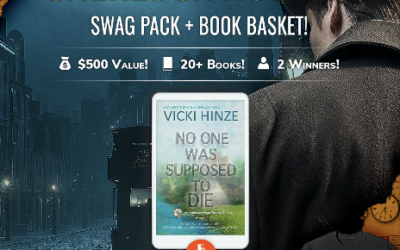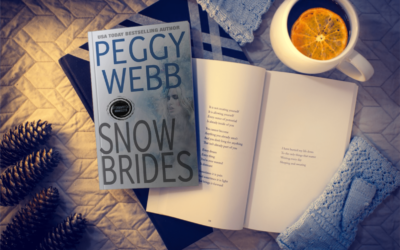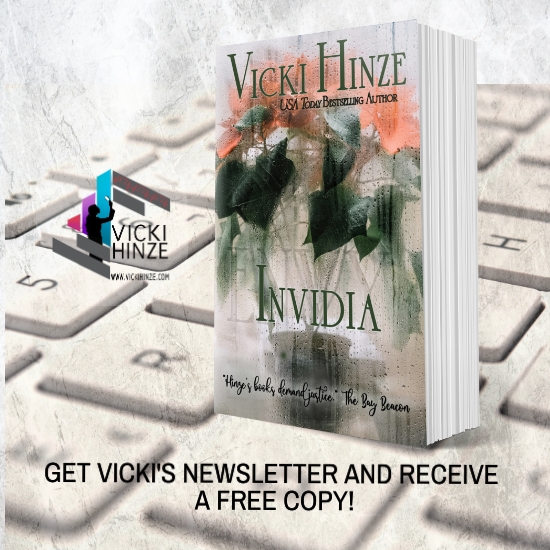Vicki Hinze © 2003-2011
Once a brief idea has been fleshed out into a story set in a specific place and peopled by specific, three-dimensional characters, the writer must actually lay out the novel. A practical way to do so is through the synopsis.
A synopsis is simply an overview of the story in which the writer tells (versus shows) what happens, and to whom. Basically, the writer answers: who, what, when, where, and why.
In a synopsis, focus on the characters, conflicts (both internal and external), and the sequencing of events.
A strong suggestion: begin at the beginning of the novel and let events unfold here as they do in the novel through to the novel’s end. Let the synopsis reflect the style and tone of the book. And forget cute antics, such as “If you want to know how this ends, request the manuscript.” That is insulting to the editor, and exhibits a lack of professionalism no writer should willingly project.
A selling synopsis, like a selling book, contains specific elements the editor looks for:
o A strong opening hook, emotional involvement
o Admirable characters who experience growth as a direct result of their novel experiences
o Logical conflict strong enough to sustain the novel through its length.
Shortchange or exclude any one of these elements and the representation of your work is handicapped.
Picture your synopsis as a rectangular table. Each element is a table leg and the novel is the tabletop. If any leg is weak, too short or too long, you’ve got a wobbly table that tips or collapses and the story folds. Balance is the key.
What is balance? That depends on the type of novel you’re writing. If it is a mystery, then the focus of the synopsis is on the mystery and that element bears most of the weight. If it’s a romance, then the developing relationship between the hero and heroine is the focus.
* Use twenty-pound, white, non-erasable paper.
* Set margins for 1 to 1-1/2 inches all around.
* Type the first page header one inch from the top of the page at the left margin:
Name
Address
Phone
Opposite that, at the right margin, type:
Title of the work
Type/genre (i.e., Contemporary Romance)
Approximate word count
Drop down four-inches from the top of the page, center, then type in all caps the title of the work. Double-space twice and then begin typing your text. Text is double-spaced and written in present tense.
On the second (and on each subsequent) page, an inch from the top of the page, use a slug line or header. At the left margin: the title. At the right margin, your last name (legal name, even if writing the work using a pseudonym), a hyphen, and the page number.(i.e., Hinze-1.) Double-space twice, and then continue with your text.
How long should a synopsis be? A rule of thumb is one page per 10,000 words of story. But if you’re smart, you’ll find out the targeted editor’s preference. If the editor hates long synopses and yours is twenty pages, you’re asking for trouble. If you don’t know the targeted editor’s preference, and guidelines aren’t available from the publisher, ask your writing peers. If all else fails, contact the publisher’s editorial assistant for specifics.
Formatting is a simple thing, true, but if it isn’t done properly, editors notice. Why? Exposure. If you reviewed a hundred synopses each and every month and one came across your desk that looked different, wouldn’t you notice? Of course, you would. You want your work to stand out, but because it’s great work, not because it looks different.
Now that the formatting is set, begin telling your story. In the manuscript, you show, but in the synopsis you tell, though you do so in present tense. That’s important, which is why I’m repeating it.
Make sure the opening line has a strong hook that grabs attention. State the story conflict in clear, concise terms. Remember that the conflict should be internal and external, and that without conflict and character goals that are logical, believable, well motivated, and admirable, you have no story.
Start at the beginning of the novel and work straight through to the end. Do not leave out character motivation or development, setting, or time frame. Interweave the elements so that none stand alone. So that it takes all of the story legs to make a complete story table.
Remember, no tricks or gimmicks are welcome here. No including tea bags or “tokens” or fancy wrappers. All of those things mark you as an amateur writer. Instead, hone your synopsis-writing skills to perfection. Polish until your story shines. Eliminate unnecessary details, side trips you’ve included only because you find them interesting. Stick to the high points, the meat of the story.
Using vivid imagery, strong verbs, and active voice pays handsome dividends. Answer all questions that evolve during the course of the synopsis and be sure that when the synopsis ends, you feel satisfied by the conclusion.
After you’ve completed the synopsis, run a check to make sure you’ve covered the book from beginning to end. That you’ve given a sense of who the main characters are and how they grow during the course of the novel due to choices they’ve made in resolving their inner and outer conflicts—all of which should be resolved by novel’s end. Are goals, motivations, conflicts, and resolutions clear and concise? Have you eliminated all unessential details?*




